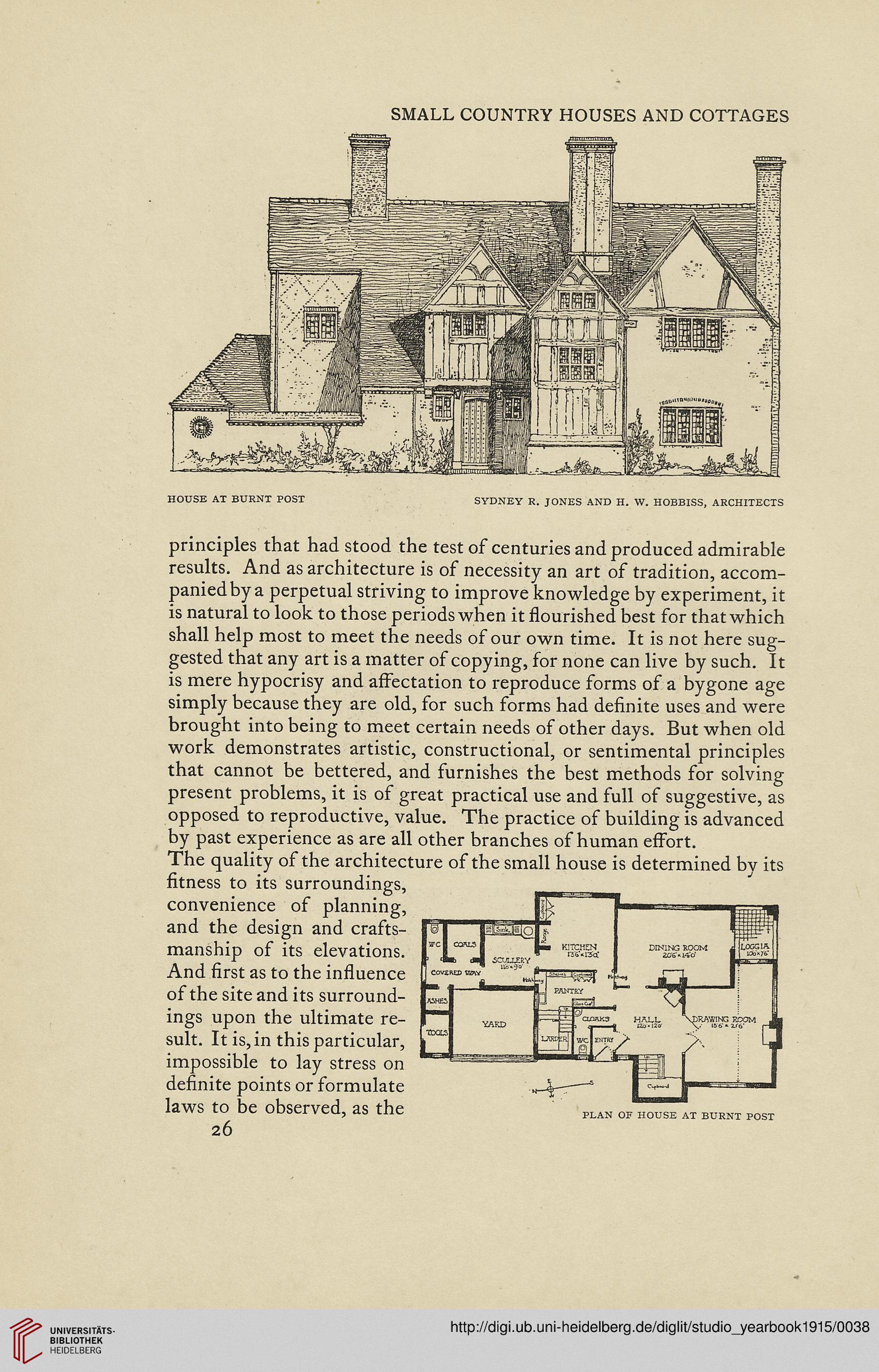SMALL COUNTRY HOUSES AND COTTAGES
HOUSE AT BURNT POST SYDNEY R. JONES AND H. W. HOBBISS, ARCHITECTS
principles that had stood the test of centuries and produced admirable
results. And as architecture is of necessity an art of tradition, accom-
panied by a perpetual striving to improve knowledge by experiment, it
is natural to look to those periods when it flourished best for that which
shall help most to meet the needs of our own time. It is not here sug-
gested that any art is a matter of copying, for none can live by such. It
is mere hypocrisy and affectation to reproduce forms of a bygone age
simply because they are old, for such forms had definite uses and were
brought into being to meet certain needs of other days. But when old
work demonstrates artistic, constructional, or sentimental principles
that cannot be bettered, and furnishes the best methods for solving
present problems, it is of great practical use and full of suggestive, as
opposed to reproductive, value. The practice of building is advanced
by past experience as are all other branches of human effort.
The quality of the architecture of the small house is determined by its
fitness to its surroundings,
convenience of planning,
and the design and crafts-
manship of its elevations.
And first as to the influence
of the site and its surround-
ings upon the ultimate re-
sult. It is, in this particular,
impossible to lay stress on
definite points or formulate
laws to be observed, as the
26
HOUSE AT BURNT POST SYDNEY R. JONES AND H. W. HOBBISS, ARCHITECTS
principles that had stood the test of centuries and produced admirable
results. And as architecture is of necessity an art of tradition, accom-
panied by a perpetual striving to improve knowledge by experiment, it
is natural to look to those periods when it flourished best for that which
shall help most to meet the needs of our own time. It is not here sug-
gested that any art is a matter of copying, for none can live by such. It
is mere hypocrisy and affectation to reproduce forms of a bygone age
simply because they are old, for such forms had definite uses and were
brought into being to meet certain needs of other days. But when old
work demonstrates artistic, constructional, or sentimental principles
that cannot be bettered, and furnishes the best methods for solving
present problems, it is of great practical use and full of suggestive, as
opposed to reproductive, value. The practice of building is advanced
by past experience as are all other branches of human effort.
The quality of the architecture of the small house is determined by its
fitness to its surroundings,
convenience of planning,
and the design and crafts-
manship of its elevations.
And first as to the influence
of the site and its surround-
ings upon the ultimate re-
sult. It is, in this particular,
impossible to lay stress on
definite points or formulate
laws to be observed, as the
26




